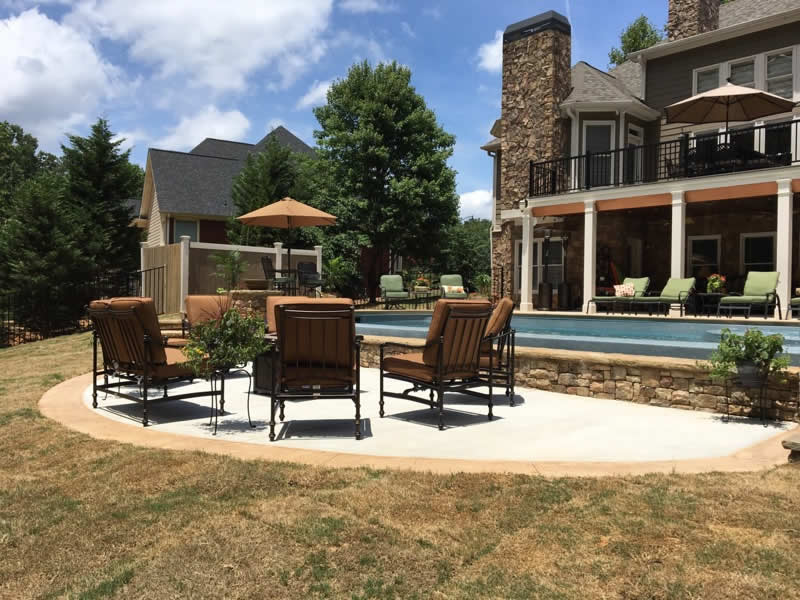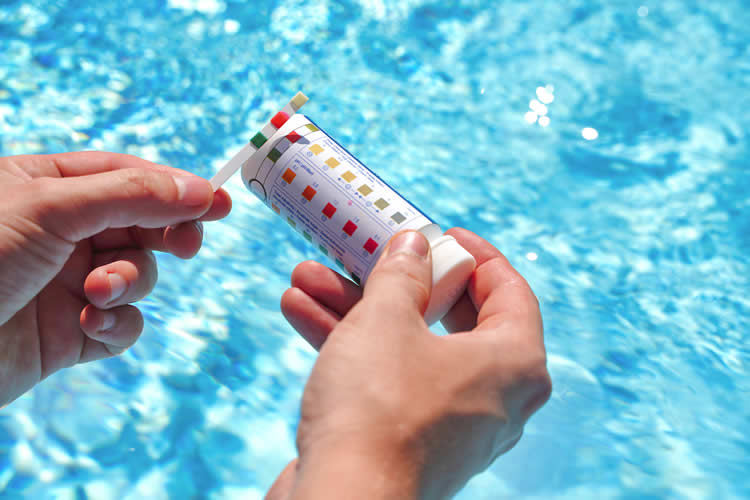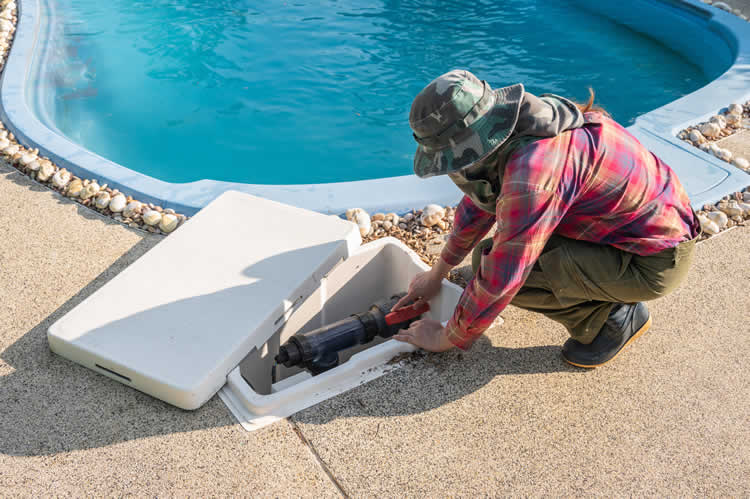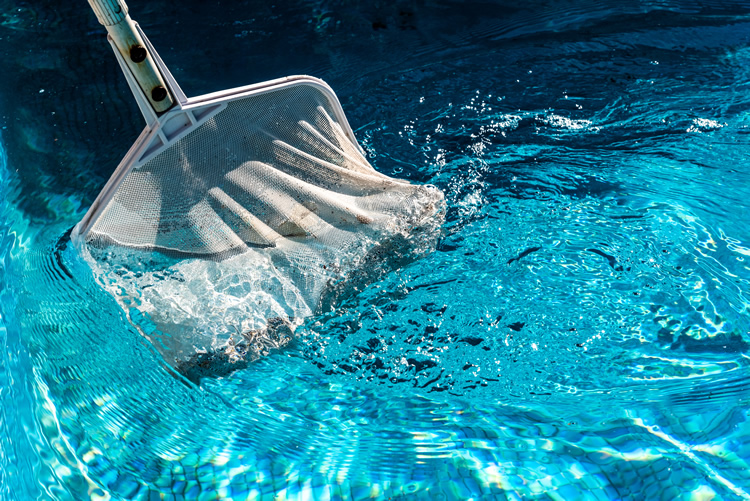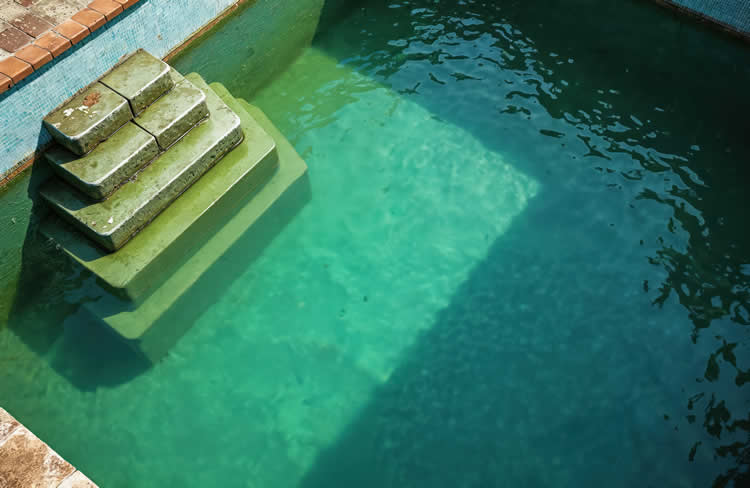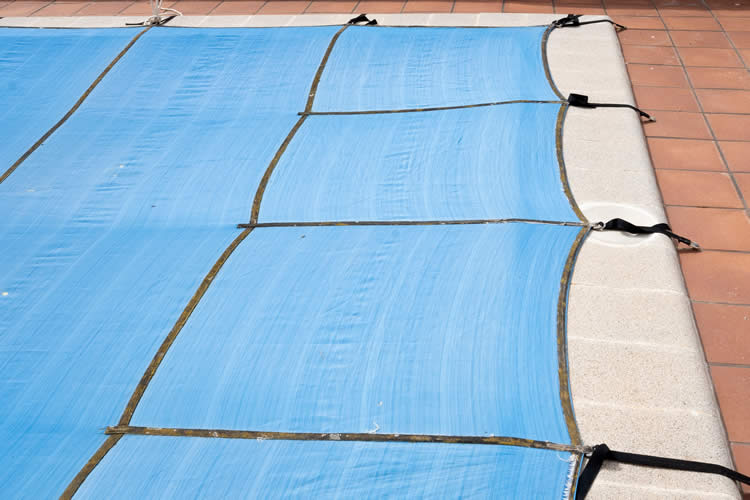How Rain, Heat, and Weather Affect Your Pool’s Chemistry in Georgia
Ask any Georgia pool owner — weather has a personality all its own. One week you’re watching the sky open up with three inches of rain; the next, the sun feels like it’s trying to bake your deck. That rollercoaster of weather doesn’t just affect your comfort; it constantly throws your pool’s chemistry off balance.
The good news? Once you understand how Georgia’s climate interacts with your pool water, maintaining clear, healthy water becomes second nature.
Rain: The Silent Trouble-Maker
Rain might look refreshing, but it’s a silent chemistry wrecker. Georgia rainwater is slightly acidic, with a pH often around 5.5 to 6.0 — far lower than your pool’s ideal range of 7.4 to 7.6. Each storm dilutes your carefully balanced water and lowers both pH and alkalinity.
That means after every rainfall, especially those classic summer downpours, you’ll want to:
- Test pH and total alkalinity as soon as possible
- Add a pH increaser if the level drops below 7.2
- Check chlorine levels — rainwater can also reduce sanitizer concentration
Heavy rain also washes contaminants like pollen, leaves, and dust into the pool, feeding algae and clouding the water. A quick skim, shock treatment, and filter cycle after big storms can prevent issues before they start.
Sunlight and Heat: The Evaporators
Now swing to the other extreme — Georgia’s intense sun and 90-degree days. That sunshine is great for a tan, but it’s tough on chlorine.
Ultraviolet (UV) rays break down unstabilized chlorine rapidly, sometimes cutting levels in half within a few hours. That’s why most Atlanta-area pools use stabilized chlorine (cyanuric acid, or CYA) to protect it from sunlight.
Still, even stabilized chlorine can struggle when water temperature climbs above 85°F. Warm water speeds up bacteria and algae growth, forcing your sanitizer to work overtime.
To manage summer heat:
- Maintain CYA between 30–50 ppm (too much can lock chlorine)
- Run your pump longer on hot days to increase circulation
- Brush and skim more frequently — heat accelerates organic buildup
If you’ve ever wondered why your chlorine “disappears” faster in July than May, now you know: the sun’s not just hot, it’s hungry.
Humidity and Evaporation: The Balancing Act
Georgia’s humidity adds another twist. Even with high moisture in the air, the heat still drives evaporation — and as water evaporates, minerals stay behind. Over time, that leads to high calcium hardness and total dissolved solids (TDS) buildup.
Too much calcium creates cloudy water or scaling on tile and equipment. If your water feels “hard” or leaves white residue along the edges, it’s time to test and consider a partial drain and refill.
Humidity also affects pool covers and chemical efficiency. During muggy stretches, leaving the cover off occasionally allows gases (like combined chlorine) to vent out, keeping your water fresh.
The Aftermath of Storms
Georgia’s summer storms can dump rain, stir debris, and send wind-blown dirt into your pool — all in the same hour. When that happens, resist the urge to simply shock and forget.
Here’s a quick recovery checklist after a major storm:
- Remove large debris right away to prevent staining.
- Vacuum or run your robot cleaner to clear finer particles.
- Backwash the filter if pressure rises above normal.
- Test water balance and sanitizer levels.
- Add shock or algaecide if the water turns cloudy.
One pro tip from seasoned pool techs: don’t overcorrect right away. Wait a few hours after testing to allow circulation to stabilize, then fine-tune your chemical levels.
Seasonal Shifts: Winter vs. Summer
You might think winter brings a break, but Georgia’s mild climate keeps pool owners on their toes year-round.
- Winter: Cold temps slow chlorine activity, so you may need less sanitizer. But pH can drift upward as water cools — check every few weeks.
- Spring: Pollen season! Skimmers fill fast, and filters need extra attention. Use clarifiers if needed.
- Summer: The full balancing act — heat, UV, and debris all working against you.
- Fall: Decaying leaves add phosphates, which feed algae if left unchecked.
Each season shifts the chemical demand slightly, but consistency is your best defense.
Tools That Make It Easier
Maintaining balance doesn’t mean endless trips to the pool store. A few practical upgrades save both time and frustration:
- Digital test kits or Bluetooth-enabled meters provide more accurate readings than old test strips.
- Variable-speed pumps keep water circulating efficiently, especially in extreme heat.
- Automatic chlorinators or salt systems adjust output to match weather-driven demand.
Even a simple solar cover can stabilize temperature swings and reduce chemical loss.
Frequently Asked Questions
Q: How soon after rain should I test my pool?
Ideally, within 12–24 hours. If the storm was heavy, test sooner to prevent pH drift and sanitizer loss.
Q: Does hot weather make my pool go green faster?
Yes. Heat speeds up algae growth, especially if chlorine levels drop below 1 ppm for even a day.
Q: What’s the best time of day to add chemicals?
Late evening or early morning, when sunlight is weakest. That gives chlorine a chance to stabilize overnight.
Final Thoughts
Georgia weather keeps you guessing, but with the right routine, your pool doesn’t have to suffer every time the sky changes its mind. Understanding how rain, sun, and humidity affect your water is half the battle — the rest is consistency and smart timing.
If you’d rather enjoy your pool than monitor it constantly, My Aqua Fun Pools offers maintenance programs designed for Georgia’s unique climate. We keep your water clear, safe, and swim-ready — no matter what the forecast brings.
Let’s Talk …
Let us take care of your Pool & landscape
At Aqua Fun, we don’t just build pools — we build relationships that last for seasons to come. Our team takes the time to understand your space, your needs, and how you actually use your backyard. Then we craft solutions that make every swim, soak, or gathering more enjoyable. It’s not about selling you more; it’s about helping you get it right.
If you’ve been thinking about improving, repairing, or re-imagining your pool, let’s talk. We’ll meet you where you are, explain your options clearly, and make sure the whole process feels simple and stress-free. That’s the Aqua Fun way — real people, real care, and results that speak for themselves.
Mon – Fri
8:00 – 6:00

